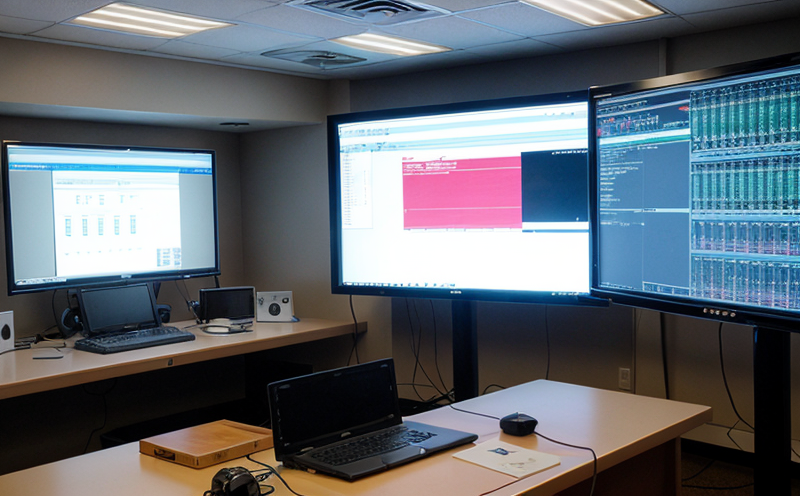EN 50388 Verification of Signaling and Power Supply Interoperability
The European standard EN 50388 is a critical document that ensures interoperability between signaling systems and power supply networks in railway applications. This verification process plays a pivotal role in ensuring the seamless integration of different railway signaling and power supply systems, enhancing safety, reliability, and efficiency across various transportation sectors.
Interoperability testing under EN 50388 involves comprehensive assessments to confirm that signaling equipment can communicate effectively with other systems within a network. This includes checking for compatibility in data exchange formats, communication protocols, and operational parameters. The standard also addresses the integration of power supply components into this interoperable framework, ensuring consistent performance across different railway networks.
For R&D engineers and quality managers involved in railway projects, compliance with EN 50388 is essential for several reasons:
- It ensures that new technologies are compatible with existing systems, reducing the risk of integration failures.
- Compliance can enhance a company's reputation within the industry, demonstrating a commitment to safety and quality standards.
- Achieving compliance allows seamless deployment in various railway networks across Europe, facilitating broader market access.
The testing process under EN 50388 involves several key stages. Initially, detailed system specifications are defined, including the types of signaling systems and power supply units to be tested. Following this, a series of tests are conducted to evaluate interoperability:
- Signal transmission tests assess how different signaling systems communicate with each other.
- Data exchange format compatibility checks ensure that all parties use standardized data formats for communication.
- Protocol compliance testing verifies adherence to agreed-upon communication protocols.
- Performance and reliability assessments evaluate the robustness of the signaling system under various operational conditions.
The process also includes extensive documentation, which is critical for ensuring that all tests are conducted accurately and consistently. Documentation must include:
- Test plans outlining the steps to be taken during testing.
- Results from each test case, detailing observed behaviors and outcomes.
- A comprehensive report summarizing findings and any issues identified.
In summary, EN 50388 is a cornerstone of railway signaling and power supply interoperability. It ensures that different systems can work together seamlessly, enhancing safety and operational efficiency. Compliance with this standard is essential for R&D engineers, quality managers, and compliance officers to ensure successful deployment in various European railway networks.
| Application Area | Description |
|---|---|
| Railway Signaling Systems Integration | This involves ensuring that different signaling systems can communicate effectively and reliably with each other. |
| Power Supply Network Compatibility | The standard checks for compatibility between power supply units across different railway networks. |
| Multinational Railway Networks | Achieving interoperability is crucial for seamless operation in multi-national rail systems, enhancing operational efficiency and safety. |
| Interoperable Communication Protocols | This ensures that different signaling systems use compatible protocols to exchange information securely and efficiently. |
Benefits
Compliance with EN 50388 offers several significant benefits for railway operators, manufacturers, and regulatory bodies:
- Safety and Reliability: Ensures that signaling systems and power supply networks operate safely and reliably, minimizing the risk of accidents.
- Operational Efficiency: By ensuring interoperability, EN 50388 enhances operational efficiency across different railway networks.
- Economic Advantages: Achieving compliance with this standard can open up new market opportunities and increase business prospects in the European Union.
- Regulatory Compliance: Meeting international standards is crucial for ensuring that products meet regulatory requirements, avoiding costly penalties and delays.
In addition to these direct benefits, compliance also fosters innovation by encouraging manufacturers to develop more advanced and interoperable systems. This leads to a competitive edge in the global market, where railway infrastructure plays a vital role.
Industry Applications
- Railway Signaling Systems Integration: Ensures that different signaling systems can communicate effectively and reliably with each other.
- Power Supply Network Compatibility: Checks for compatibility between power supply units across different railway networks.
- Multinational Railway Networks: Achieving interoperability is crucial for seamless operation in multi-national rail systems, enhancing operational efficiency and safety.
- Interoperable Communication Protocols: Ensures that different signaling systems use compatible protocols to exchange information securely and efficiently.
| Application Area | Description |
|---|---|
| Railway Signaling Systems Integration | This involves ensuring that different signaling systems can communicate effectively and reliably with each other. |
| Power Supply Network Compatibility | The standard checks for compatibility between power supply units across different railway networks. |
| Multinational Railway Networks | Achieving interoperability is crucial for seamless operation in multi-national rail systems, enhancing operational efficiency and safety. |
| Interoperable Communication Protocols | This ensures that different signaling systems use compatible protocols to exchange information securely and efficiently. |
International Acceptance and Recognition
EN 50388 is widely recognized and accepted across the European Union, making it a key standard for railway signaling and power supply interoperability. Its international acceptance ensures that products and systems meet strict quality and safety standards, facilitating smoother market entry and broader business opportunities.
The standard has been adopted by various European countries as part of their national standards frameworks, further reinforcing its importance in the industry. Compliance with EN 50388 is a prerequisite for participating in major railway projects across Europe, ensuring that all systems are compatible and reliable.
International recognition extends beyond Europe, with many railway companies and manufacturers globally adopting this standard as best practice. This global acceptance enhances the reputation of compliant entities, fostering trust among stakeholders and promoting further collaboration within the industry.





